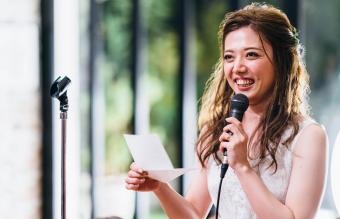
Wedding bouquets for the bride and bridesmaids are decisions you need to make based on type of flower bouquets you want, arrangements and cost. Once you decide, the rest of the wedding flower choices are easy since you'll use the same flowers for the men's boutonnieres and all wedding flower decorations.
Types of Wedding Flower Bouquets
When it comes to the kind of bouquet you want, there are many options. The first decision you will have to make is whether you want a silk arrangement or live. Silk arrangements make it easy to re-do them if you choose, can be done well ahead of time, and have staying power. However, with a little care, the beauty of live flowers is unsurpassed.
Once you have decided on silk or live flowers, you need to decide the shape of the bride's bouquet. Her bouquet is traditionally larger than the bridesmaids. Three popular types of bouquets include:
- Cascading-A cascading bouquet starts large and in an oval or round shape where you hold it. It then trails down to make an elegant "train" of the greenery. The bride is often the only one who carries a cascading bouquet.
- Round-A traditional shape, this bouquet has recently come back into fashion. Flowers are tightly packed together to form a round shape. A bride will carry a large round bouquet, and the bridesmaids might carry either smaller round bouquets or nosegays.
- Nosegay-A very small arrangement of smaller flowers, usually carried by the bridesmaids. A bride will sometimes carry this type of arrangement at an outdoor or informal wedding.
Tying the bouquet together presents options. No matter what type of bouquet you pick, you can either hand-tie the bouquet or have the stems wrapped. Hand-tie bouquets often have long stems showing, with the tie in the middle. Wrapped bouquets are frequently done in silk or similar material, sometimes with pearls or other special touches added to the stem. The wrapped bouquet stems form a "handle" for you to hold onto.
Arrangement of Flowers
Once you have decided on the basics, you must think about how you want your wedding flower bouquet to be arranged. Your personal preferences come into play with these decisions.
Popular arrangements include:
- Round bouquet, tightly packed with all one color or family of colors. Very little greenery is included, and is usually around the edges only.
- Cascading bouquet with large stargazer lilies. A green vine trails down, and some smaller flowers are included throughout the top.
- Nosegay of stephanotis, hand tied.
- Round bouquet of multiple flowers in different colors. Greenery may be showing in the middle of the bouquet, with baby's breath and other accents.
- Round bouquets can be symmetrical, with different colors and varieties of flowers placed so that every side of the bouquet looks similar.
A bride might choose for her bridesmaids to carry bouquet "balls." A trendy option for spring and summer weddings, the bridesmaids carry round balls of flowers by a looped ribbon.
Cost of Bouquets
Make sure to budget the cost of wedding flower bouquets into your total budget. While you may not care if the centerpieces and other decorations are done in cheaper carnations or other flowers, the bouquets will be seen in photographs for years to come. This is why so many brides make careful decisions regarding their bouquets.
Ways to keep costs down include:
- Using silk instead of live flowers
- Choosing a smaller round bouquet for the bride and have bridesmaids carry nosegays
- Use flowers that are in season
- Include lots of greenery
- Consider carrying a bouquet made of baby's breath
- Order flowers online
Another thing to consider is the size and cost per stem of different flower varieties. A single stem of stephanotis may cost you three dollars, the same as a rose. But roses are much larger blooms, so fewer flowers will be needed to make the same size bouquet. Consider using the expensive flowers as an accent or use it only in the bride's bouquet.







